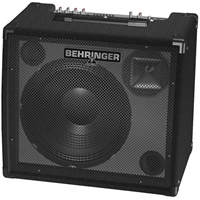Long rambling post warning:If you just want to think about the question in the title, skip to the end.
I have been experimenting with NewsFire since I got it as part of the MacHeist bundle that I mentioned last Monday. It’s fast to run, has a nice Mac-ish UI, and generally is the obvious kind of thing for a Mac user to step up to, once they outgrow the built-in RSS in Safari.
The thing is, to import your bookmarks into NewsFire, you need to have an OPML file. How to get such a thing? hm…
I’m sure there are better answers to this problem, but here’s what I did:
- Imported into Firefox the bookmarks from Safari
- Clicked once on each RSS bookmark; when Firefox asked how I wanted to read it, picked Google Reader
- Organized the feeds into folders in Google Reader — Aside: Google follows the “folder == tag” model, so feeds can be in more than one folder.
- Exported the feeds as OPML
I went this route largely because I also wanted to play around with Google Reader. It’s interesting that, although it doesn’t have the L&F you’d want in a desktop app, it is simple and effective and still has a clear sense of design style to it. At some level it reminds me of the “good ol’ days” of Smalltalk: It’s not a fancy GUI, but it gets things done.
Now that I had an OPML file, I imported it into NewsFire, whereupon I hit another snag: All of the categorization information had been thrown away. To attempt to figure out whether the problem was with NewsFire or the file generated by Google Reader, I imported the OPML into OmniOutliner, which did indeed show all the folders. That’s still not conclusive, but it shows that either there is a bug in NewsFire, or that Google and NewsFire interpret the spec differently. In any case, one more round of categorizing into folders and I was ready to go.
After all that, I realized that NewsFire doesn’t have the one feature that I “need” in a news reader: the ability to show all of the text of the items inline in the list (i.e. the default way the items are presented in Safari, or what Google Reader calls the “Expanded view”).* Without that, NewsFire is basically a non-starter for me.
So I started thinking about Google Reader again. As far as I can see, it has only two significant downsides:
- It is dependent on the speed and stability of Google’s servers.
- It doesn’t provide notification when there are new items available.
In general, Google is as solid as any site on the net, both in speed and stability. I spent a couple of hours reading news this morning, and never waited more than a couple of seconds for an update. If that’s typical, then it’s good enough for me.
The notification issue has, of course, been solved in numerous ways by third-party add-ons. It didn’t take long for me to find one for the Mac that seems reasonable: Google Reader Notifier. It puts yet another icon in the menu bar, which I’m not sure I’m happy about yet. We’ll see.
The fascinating thing about Google Reader is that my machine doesn’t have to poll each of the sites in question to see if there are new items; Google does it. This is better both for me, since I only poll one site (i.e. Google) now, and for the internet as a whole since Google can optimize in ways that individual users can’t. For example, it seems that Google would only need to poll once (in a while) for everyone who tracks Engadget. The more people who read a particular site, the greater the savings.
The down side of that, of course, is that anyone who uses “page hits on my RSS feed” as a metric for ad revenue takes a beating. Hm… I guess the good news could be that if they’re using Google AdSense, then Google could take that into account. I wonder if they do.
Summary: I’ve decided to use Google Reader as my default RSS reader for a while. I have removed all of the RSS feeds from Safari except for the internal IBM ones that Google can’t see.
* Of course, as usual, it’s probably that I’m just a dolt — no, not “doIt” — and can’t figure out how to configure NewsFire properly. If that’s true, someone please enlighten me.


